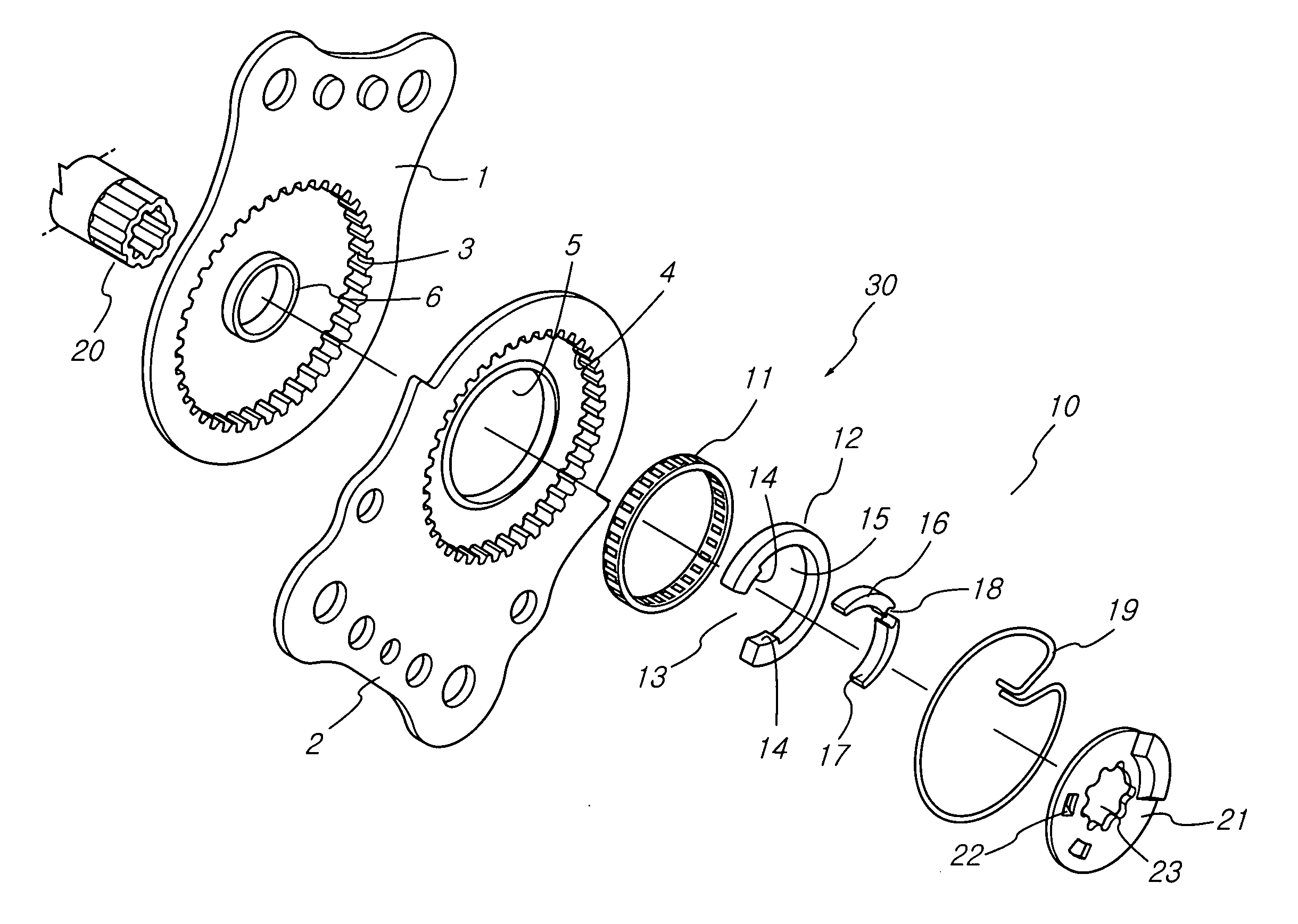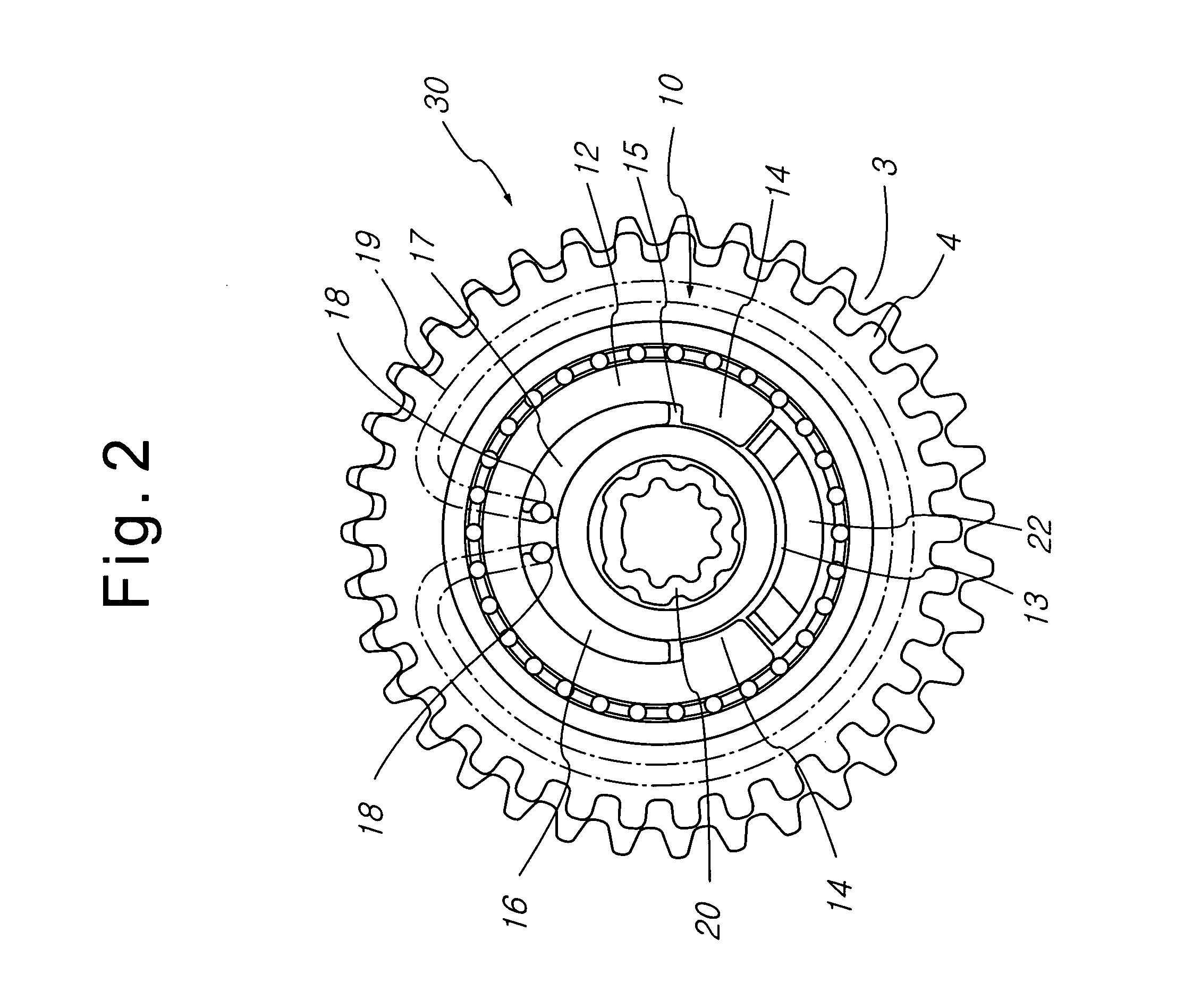Continuously operable seat-reclining device for vehicles
- Summary
- Abstract
- Description
- Claims
- Application Information
AI Technical Summary
Benefits of technology
Problems solved by technology
Method used
Image
Examples
Embodiment Construction
[0029] Now, a preferred embodiment of the present invention will be described in detail with reference to the accompanying drawings.
[0030]FIG. 4 is an exploded perspective view showing a continuously operable seat-reclining device 50 for vehicles according to a preferred embodiment of the present invention, FIG. 5 is a front view showing the continuously operable seat-reclining device 50 for vehicles according to the preferred embodiment of the present invention when the continuously operable seat-reclining device for vehicles is assembled, FIG. 6 is a cross-sectional view of the continuously operable seat-reclining device 50 for vehicles according to the preferred embodiment of the present invention taken along line A-A of FIG. 5, FIG. 7 is a front view of the continuously operable seat-reclining device 50 for vehicles according to the preferred embodiment of the present invention showing main components exposed when the continuously operable seat-reclining device for vehicles is ...
PUM
 Login to View More
Login to View More Abstract
Description
Claims
Application Information
 Login to View More
Login to View More - R&D
- Intellectual Property
- Life Sciences
- Materials
- Tech Scout
- Unparalleled Data Quality
- Higher Quality Content
- 60% Fewer Hallucinations
Browse by: Latest US Patents, China's latest patents, Technical Efficacy Thesaurus, Application Domain, Technology Topic, Popular Technical Reports.
© 2025 PatSnap. All rights reserved.Legal|Privacy policy|Modern Slavery Act Transparency Statement|Sitemap|About US| Contact US: help@patsnap.com



